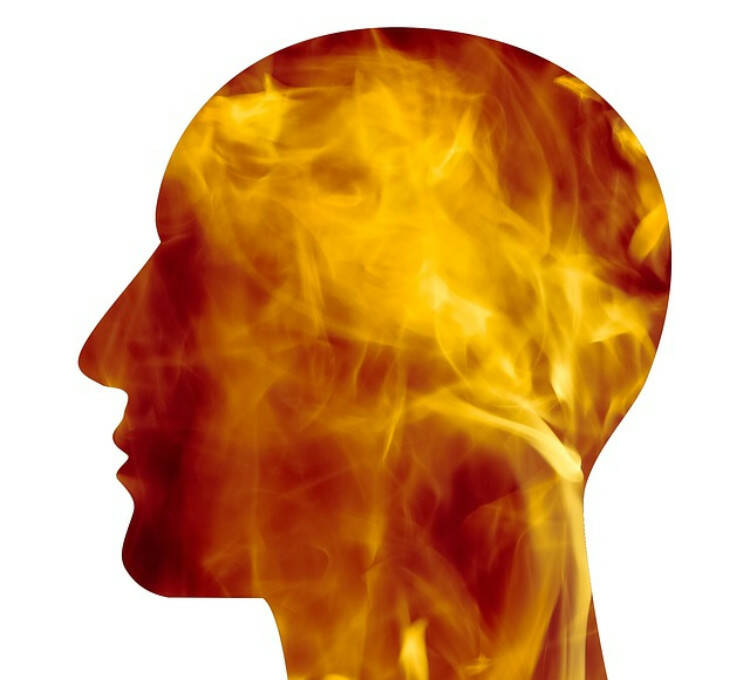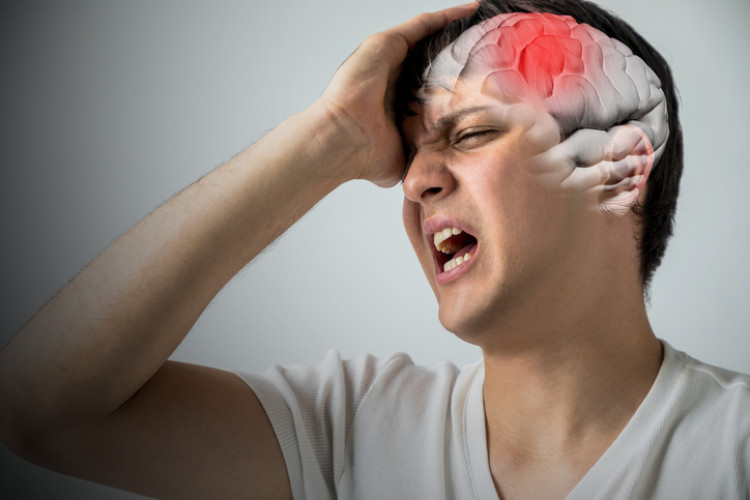- solen.cz - Differential diagnosis of migraine
- jfmed.uniba.sk - Cephalea (headache)
- czech.neuro.cz - Migraine
- migrainejechoroba.sk - About migraine
- novartis.sk - Neurological diseases - migraine
- neurologiepropraxi.cz - Preventive treatment of migraine
How to distinguish a migraine from a regular headache? Symptoms and main features

Migraine is a headache occurring in almost 10-15% of the population. It is a recurrent attack of throbbing pain of moderate to severe intensity. It is difficult to resolve without targeted treatment.
Article content
A headache is nothing compared to the seizure, migraine pain. Those who suffer from migraines know.
You could talk about a separate disease, not just a symptom.
However, normal and migraine pain differ from each other in more ways than just the intensity of the pain.
Which are they?
- A single migraine attack lasts several hours or days. It is accompanied by other symptoms that are not typical of a normal headache.
- A duration exceeding 3 days is called status migrainosus.
- The frequency of attacks varies from a few days to weeks. In some individuals it may be only a few attacks in a lifetime.
What makes a migraine specific?
What are the specifics of migraine headaches?
The onset of an attack is preceded by a precursor(aura), which takes the form of various prodromes (warning signs) appearing before the disease.
They are not very noticeable such as nervousness, irritability, anger, mood disorders to more pronounced optical phenomena.
- They may manifest as negative phenomena - varying degrees of blurred unclear vision, distorted images of the surrounding environment, visual field loss (scotomas) or transient blindness of one eye.
- In addition, there are positive variants in the form of sparkles, flashes (phosphenes). The aura is absent in classic headaches, but sometimes it may not even be present in migraine. With irritability and mood changes, the migraine itself is usually longer with a more severe course. The precursor usually subsides spontaneously after a few minutes and the pain itself arrives.
The course of a migraine attack
The course is characterised by moderate, in most cases severe, pain intensity. It usually starts in the morning after waking up.
It has a seizure-like, throbbing character, mainly on one side of the head in the temporal region. This is why we speak of so-called hemicrania.
The sides alternate during each seizure.
In the case of recurrent "migraines", where the localisation of pain is always on one side, other diseases of organic origin should be considered. These include, for example, a brain cyst, abscess, tumour, aneurysm of a cerebral vessel, malformation and others.
The intensity of the pain is so debilitating that it leads to general fatigue and malaise the following day.
Pain throughout the body, especially muscle pain, is also present.

Accompanying symptoms
The patient is pale, pale, sweats profusely, and has a dry mouth during the attack.
The pain is accompanied by other vegetative symptoms such as lack of appetite, nausea and vomiting.
Sometimes there may be loose stools, less often constipation (obstipation).
Hypersensitivity to light (photophobia) is typical. People usually shut themselves in a dark room, which makes the general course easier.
Less well known is hypersensitivity to noise (phonophobia).
An indicative table on how to tell if it is a migraine
| HEAD PAIN | MIGRAINE |
| without aura | aura |
| slow onset of trouble | sudden onset of trouble |
| mild to moderate pain intensity | moderate to severe pain intensity |
| diffuse (full-body) headache | localised to one half of the head |
| persistent pain | paroxysmal pain in attacks |
| without vegetative symptoms | marked autonomic symptomatology |
| mostly without other neurological symptoms | neurological symptomatology present |
| duration - several hours | duration - several hours to days |
| no difficulties after resolution | malaise, fatigue, muscle pain after resolution |
Rare manifestations of a complicated migraine course
- Persistent visual phenomena (sparking, blurring, blurred vision)
- Sensory disturbances
- Sensory - decreased sensitivity (hemipaesthesia), tingling on one half of the body, motor - (hemiparesis, hemiplegia) unilateral partial or complete paralysis of half of the body
- Speech disorders - problem with pronunciation
- Tribal symptoms - tinnitus, double vision (diplopia), uncoordinated body movements especially when walking (ataxia), dizziness (vertigo), disorders of consciousness have also been described
What are the most common causes of headaches?
The diagnosis of migraine is based primarily on anamnestic data.
Symptoms must be consistent with the above in terms of onset, development, character, location, duration and frequency.
It is also necessary to establish the circumstances of the onset and to observe the situations in which the pain most frequently occurs.
Neurological symptomatology is usually present, but the findings are normal except for attacks with aura.
The cause has not yet been identified. A genetic basis is assumed.
Sometimes their occurrence is linked only to a specific situation.
Then it is most likely to be a non-migrenous headache.
They are frequent during menstruation, in certain stressful situations, with increased physical or mental stress, with non-compliance with drinking regime with consequent lowering of blood pressure and dehydration, sleep disorders, weather changes.
These negative influences also aggravate migraine pain.
One should also take into account the social and working conditions of the person, habits, bad habits - smoking, drugs, alcohol, medications.
Even long-term use of painkillers can result in headaches with the passage of time, which then respond poorly to treatment.
Certain foods such as chocolate, cheese, citrus fruits, caffeinated and tannic drinks can also have provoking effects.
Last but not least, they are caused by inhalation of a variety of chemical substances, either in connection with employment (painter - acetone) or by deliberate inhalation of psychoactive substances (addict - toluene).
Secondarily, similar symptoms occur as a consequence of the primary disease:
- high blood pressure
- increased intraocular pressure
- diabetes
- dental caries with pain spreading to the head
- degenerative diseases of the cervical spine
- ear inflammation
- sinusitis
- allergies
- inflammation of the brain (encephalitis)
- meningitis
- brain aneurysm
- brain tumour
- trauma
- epilepsy
- ...and many others
What helps against headache and migraine? How to get rid of pain quickly?
Elimination of provoking factors relieves symptoms.
A quiet environment with minimization of distracting stimuli is preferable.
Light evokes pain, so it is important to stay in a dark room.
Pain increases in intensity with minimal head movement.
Unless necessary, all movement and physical exertion should be avoided.
Mental stress also aggravates the condition, but negative thoughts cannot always be avoided.
Alcohol and cigarettes aggravate the condition to a significant degree. These should be avoided, and not only during the attack.
Read also the articles in the magazine:
Alcoholism: What are the proven effects of alcohol on our bodies?
Smoking and its impact on health. Where did it all start?
Drug therapy
For some less serious conditions, it may be possible to control symptoms with lighter over-the-counter analgesics, for example paracetamol (paracetamol, panadol, ataralgin) or acetylsalicylic acid (anopyrine, acylpyrine, medipyrine).
Stronger effects are produced by drugs that are combined with caffeine or a spasmolytic (algifen).
Another option is non-steroidal anti-inflammatory drugs used for more severe pain (brufen, ibalgin).
For very severe attacks, sumatriptan (sumatriptan sandoz, emigran) can be given even during a full-blown migraine.
It can be given in tablet form, but is more effective in injectable form.
It contracts the affected blood vessels in the brain, relieving pain within minutes to an hour.
It is prescription-only.
Beware, however, that migraine cannot be treated by prescription alone.
Long-term use of medication reduces its effect. If the provoking factors for the condition persist, it is only a temporary improvement in the condition. It is merely a suppression of symptoms that will later progress due to improper management.
Several types of headache are described in the article:
Headache: Sometimes it is harmless, sometimes it indicates a serious problem
Headachein pregnancy: what causes it and what to do for the pain?
Interesting resources
Related










